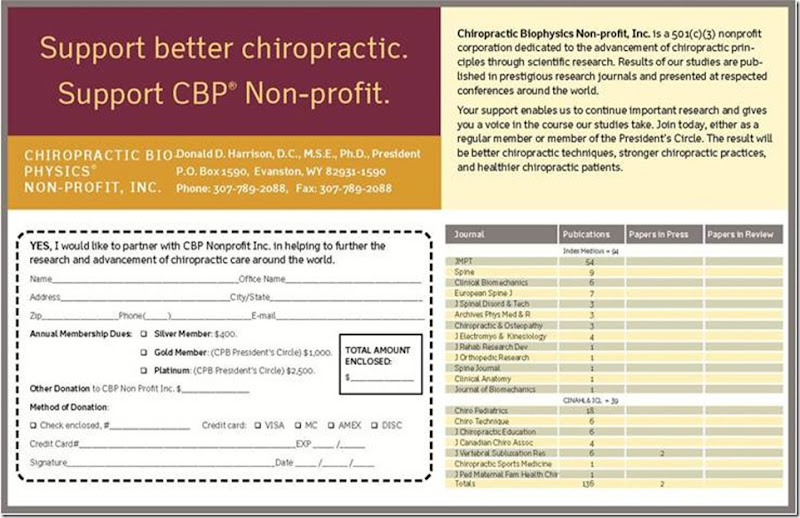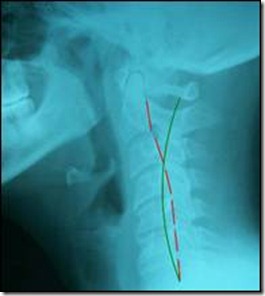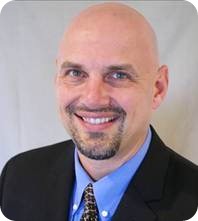Informed Consent Issue in Connecticut Resolved By State Chiropractic Board
 Monday, July 12, 2010 at 8:21AM
Monday, July 12, 2010 at 8:21AM By Stuart E. Hoffman, DC, FICA
ChiroSecure President
Stuart E. Hoffman, DC, FICA, is the president of ChiroSecure, the only malpractice insurance program endorsed and approved by the International Chiropractors Association. Dr. Hoffman is a highly experienced doctor of chiropractic and licensed insurance broker who knows the intricate details of daily practice and who can give you the best advice based on his unique knowledge of both the insurance world and the world of chiropractic. Dr. Hoffman can be reached at 1-866-802-4476 or visit www.chirosecure.com.
INTRODUCTION
In recent months, a high-profile debate on mandating specific terms for “informed consent” by doctors of chiropractic in Connecticut has been a very serious concern for many of us in the chiropractic profession. The roots of this debate go back to the activities of a small but heavily funded and well-organized clique of individuals and organizations with names like “Victims of Chiropractic Abuse” to use the media and also the public policy process to incorrectly frighten consumers into believing that chiropractic inherently puts people at risk for stroke. The impressive safety record of chiropractic, indeed the most impressive safety record of any health care profession, appears to mean very little to those organizations and individuals who have taken on the role of professional critics of our profession.
The Issue of Informed Consent
These blatantly anti-chiropractic organizations promoting the fear of stroke from upper cervical adjustments hit upon the informed consent issue as a means to showcase their issues. In four days of public hearings in January of this year before the Connecticut State Board of Chiropractic Examiners, they played it for all the publicity they could get, the facts again, taking a complete backseat to the fear factor they were promoting. The research and actuarial records, and the failure to make anything but a casual or coincidental link between stroke and chiropractic services, did not seem to deter these people at all.
At these four days of hearings, the state’s chiropractic organizations, the Connecticut Chiropractic Council and the Connecticut Chiropractic Association, with the support of a host of national organizations, offered a reasoned, research and fact –based defense of the safety record of chiropractic procedures, arguing that informed consent was already well-established in the state but that a specific warning of stroke as a possible outcome for cervical adjusting was simply not supported by the research record. On the other side, a long list of critics of chiropractic, including some well-known professional anti-chiropractic advocates such as Murray Katz, MD who was such a feature in similar discussions in Canada, and the “organizations” active on the stroke issue offered emotion, and accusations, but no facts to support their position.
Without any doubt, the highlight of the chiropractic presentations at these hearings was the testimony presented by respected researcher and epidemiologist J. David Cassidy, DC, PhD, Dr.Med.Sc., who testified as an expert witness and consultant to the International Chiropractors Association (ICA). Dr. Cassidy addressed key facts and issues on the basis of the existing science and research record, to which he has been a significant contributor on the issue before the Board. The objective of his testimony was to bring the discussion on an emotional issue back to the science and the objective research record. Speaking in the context of the most recent research (Neck Pain Task Force Report of the Bone and Joint Decade 2000-2010, a United Nations & WHO sanctioned study), Dr. Cassidy stated in compelling and well-documented terms that “neck manipulation is safe and effective form of health care.” Despite several hours of aggressive cross-examination, Dr. Cassidy was able to keep the focus of the hearing on the scientific record and laid the foundations for the Board’s eventual fact-based decision.
CT State Board of Chiropractic Examiners Ruling
On June 11, 2010, the Connecticut State Board of Chiropractic Examiners issued their declaratory ruling on the issue of a mandated informed consent policy requiring a specific stroke Warning. In a well-reasoned, carefully worded statement, the Board concluded:
“The Board heard the testimony of persons who have suffered a stroke and who allege that joint mobilization, manipulation, or adjustment of the cervical spine was the cause of such stroke, experts, and lawmakers, and carefully reviewed the statistical and analytical data that was admitted into evidence at the hearing. After a careful and thorough review of all of the testimony and documentary evidence admitted at the hearing, the Board concludes that there is sufficient evidence to establish that a stroke or a cervical arterial dissection is not a risk or side effect of a joint mobilization, manipulation or adjustment of the cervical spine. Therefore, the Board finds that in securing informed consent from a patient a chiropractor is not required to address with each patient the risk and/or possibility of the occurrence of a stroke or cervical artery dissection as a side effect of a joint mobilization, manipulation or adjustment of the cervical spine.”
An objective observer would think that this statement would put an end to the matter. This, regrettably, is not the case. The goal of the anti-chiropractic activists is not to deal with facts or real risks but to hurt the chiropractic profession. Sadly, we will have to continue to deal with the backwash of their campaign, since after the defeats in the legislature in Connecticut and at the hands of the Connecticut Board of Chiropractic Examiners, a class-action lawsuit against the chiropractic state associations in Connecticut has been filed by one of the “stroke” groups alleging harm because the members of those associations have not specifically been warning patients of a stroke risk. This is more of the same anti-competitive distortion, probably for the publicity it will generate because the facts do not support their allegations. Regardless of their destructive intent and deceitful ways and means they are employing, the chiropractic profession will need to come together to support our colleagues in Connecticut against this latest phase of harassment.
The Connecticut episode shows the degree to which informed consent has become the subject of growing attention as an element in risk management procedures, because the lack of it in malpractice cases has become a common and effective claim. It makes so much more sense to proactively deal with all of its dimensions ahead of any problems that it is to try and patch over or resolve issues with patients after the fact. Rather than look at the informed consent exercise as a burden, practitioners should look at the interaction with the patient on relative risk and informed consent as an opportunity to orient them to what they can expect from the adjustment process, especially if they are first-time patients. Such frank and open dialogue can only strengthen the doctor-patient relationship and enhance the positive nature of their chiropractic experience.
CONCLUSION
In today's litigation-happy (or many might argue litigation-crazy) society, even the best, most conscientious and responsible doctors of chiropractic, applying the highest standards and most established procedures and protocols, can still be named in a malpractice claim. When it comes to informed consent, a whole new dimension of malpractice reasoning comes into play, where patients and their attorneys regularly argue that if a patient was fully informed of all risks and possible negative outcomes, then they may have decided not to receive the care and would not, as a result, been injured. The proactive doctor of chiropractic will respond accordingly, with sound and well-researched forms and procedures, all consistently applied and included in the patient’s file. It pays to do the work and, consequently, minimize the risk.
And, as every doctor of chiropractic should know by now, a reliable malpractice insurance carrier is your best partner in protecting your practice and yourself from malpractice claims. In that process, ChiroSecure stands ready to serve and assist in making sure that you have the coverage you need, and in implementing risk management procedures that will provide the best possible firewall to jeopardy.
Shop around, compare and see what you find. Then, call ChiroSecuretoday and find out how you can have the best protection on the market, at highly competitive rates. The result will be both excellent coverage and peace of mind. You deserve both.
Call ChiroSecure toll-free today at 1-866-802-4476, or visit ChiroSecure on the web at www.chirosecure.com. Receive our FREE Essential Guide to Purchasing Malpractice Insurance audio book on Facebook www.facebook.com/chirosecure .
References
[1] Hanumans v. Boyson, No. 2003AP1527, 2005 WL 1522624 (Wis. June 29, 2005).
[1] Matthies v. Mastromonaco, 160 N.J. 26, 37, 733 A.2d 456, 462 (1999).
[1] Schreiber v. Physicians Insurance Company of Wisconsin, 223 Wis.2d 417, 588 N.W.2d 26 (1999).
 CBP Seminars | Comments Off |
CBP Seminars | Comments Off | 





















